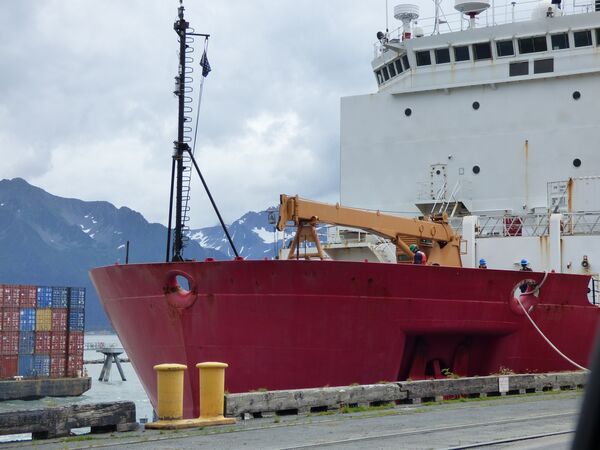
US Coast Guard icebreaker Healy is hosting a series of Arctic-related research and scientific experimentation off the Alaskan coast. (Michael Fabey)
US Coast Guard medium icebreaker Healy (WAGB-20) recently completed operations in the Beaufort Sea in support of the Arctic Mobile Observing System (AMOS) programme being developed and tested by the Office of Naval Research (ONR), Healy'sCaptain Ken Boda told Janes.
AMOS is a collection of buoys designed for use in the Arctic, as well as unmanned underwater vehicles (UUVs), meant to operate under ice-covered regions and establish two-way Arctic communications – vehicle-to-vehicle, vehicle-to-buoy, or node, and node-to-shore.
According to US Navy officials, AMOS employs Topside Command, Control and Communications (C3) software to command-and-control the UUVs, to provide health and status monitoring tools for each of the unmanned assets, and to provide operators a way to visualise and analyse relevant environmental information, including ocean currents, water temperature, salinity, and ice cover.
Recent Topside C3 updates for AMOS help support data sets containing ice information.
“We put moorings down and launched autonomous vehicles,” Capt Boda said during a ship-to-shore interview as Healy was docked in Dutch Harbor, Alaska. “The buoys communicate with the [UUV] gliders.”
Healy had to break ice to get into position for the AMOS operations.
“The ice was pretty thick, getting from open water in the Chukchi Sea and over to the Beaufort Sea,” Capt Boda said. “It was running from nine-tenths coverage to almost 100% coverage there. We were breaking ice pretty much all the time. It was hard to find open water in some places.”
Once Healy
Looking to read the full article?
Gain unlimited access to Janes news and more...







